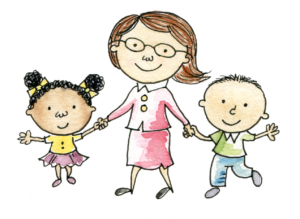
If Donna DeSiato could write a book, it would be called “Shifting the Paradigm” and it would be a bestseller.
DeSiato, superintendent of East Syracuse Minoa Central School District and leader of the East Syracuse Minoa STEM Learning Ecosystem (ESM), had a revelation nine years ago: Schools could not maintain the 1960’s model that sets the achievement bar solely to getting a diploma. And this shift could not happen without partners.
The school district, fueled by the ecosystem, has been able to involve business, after-school organizations, families and others as partners in the lifelong process of educating children.
Thanks to the changes in the model, the district experienced the largest increase in graduation rates in New York state last year and still hovers at 92-93 percent graduation rates. DeSiato credits the leap in achievement to the shifts in the education paradigm and the strong levels of engagement from community stakeholders, including families.
Siloed and separate to collaborative and connected
In the beginning, ESM was a siloed community, with education partners working on their own projects with little collaboration. “I think one of the dangers and particularly for educational institutions is that they have been…very siloed, separate and isolated,” says DeSiato.
Family engagement suffered greatly in the old segregated model. When it existed, family engagement was disconnected from student learning and focused on rules, regulations and timelines. With a new collective vision and mission, the ESM ecosystem now supports families’ connections to student learning beginning in early childhood into high school and beyond.
“Our vision is embedded in student learning so that become the nucleus for connecting all partners and draws families in as a major part of that connection.” says DeSiato.
Starting with STEM early
The ecosystem has embraced family engagement as a cornerstone of its mission and has an entire continuum of engagement programs and initiatives that were co-designed with families.
ESM starts early with programs for 3 year olds and 4 year olds, hosting at least one family night a year to engage families around STEAM.

“When we were designing our ecosystem, looking at the bigger picture, we kept coming back to STEM,” says DeSiato. “Learning and working in the 21st century (and beyond) looks like STEM and there is no way around that. Now, learning is constant and time is the variable. Learning happens through engagement, so we had to change the way we did things; we have changed the model.”
ESM early childhood family nights help parents understand what STEM is all about from the beginning. DeSiato gives an example of bringing STEM and literacy together with Eric Carle- themed activities that keep the 3 and 4 year olds excited.
Family Engagement grows with the child
As ESM children grow and tackle new STEM skills, the ecosystem continues to bring families in to support their young learners. Throughout the year, families have opportunities to experience STEM in collaborative environments of school, after school, museums and businesses.
In elementary school, homework is connected to in-school engineering (Engineering is Elementary) and computational thinking lessons in elementary school.
Families are invited to project-based learning demonstrations in middle school to see their children in action and such experiences are tied to their children’s transition to high school, including information about the types of courses students will need to demonstrate their application in STEM.
Families are also present during career exploration events, in partnership with business, to demonstrate career pathways available to students in STEM.
Reaching the hard to reach families
ESM hosts a STEM-centric summer camp called Spartan Summer for students ages 11 to 14 in collaboration with a local college. Parents begin their engagement by learning about the camp, because opportunities for this age range can be difficult to find. STEM hooks the students and families to deepen their engagement post-summer camp as their child looks for new opportunities during the school year.
Demonstrating connectedness within the community, as well as a connection to the real world is an ESM strategy that brings parents to the table. Deliberate connections are made between what students are learning at career opportunities. Business partners within the ecosystem are also present at events like local science fairs and parents appreciate the connection that ESM is making for them.
“Five or six years ago, we would be lucky to get 30 to 60 kids involved in our camps and events because we were operating with a very outdated model,” says DeSiato. “We ended our day with 125 students already enrolled and our phones were still ringing off the hook with parents asking to enroll their child. The difference is STEM and the connection. With project-based learning, we are engaging families like never before and offering real world connection.”
Scaling the work
Plans were co-developed to implement strategies year by year and site by site in ESM. Now, nine years into implementation, the ecosystem has expanded exponentially in what it has been able to accomplish. DeSiato credits much of this to the power of partnerships.
“If you tried to accomplish what we did now, you would have to go back and look at us nine years ago. We aligned the work of multiple partners and made sure all elements of student success were included in implementation plans, including family engagement. Embracing an inclusive, collaborative strategy is what allowed us to accomplish so much. As a superintendent, I could maybe operate 2 percent of what we are doing on my own. The network matters,” says DeSiato.
Reaching the classroom
ESM is changing both the system as well as building leadership and classroom level capacity. “If only one classroom is teaching differently, you won’t make a sustainable system-wide impact. Simultaneously, if the system is changing, but there is no support for teachers on the ground you won’t see changes,” DeSiato points out.

DeSiato stresses the value of stakeholder buy-in from all levels and all sectors in the community, including families. Co-design of the system change and classroom level implementation must be a synergistic idea created by everyone, not just systems change for the sake of change. Families offer a different lens and bring valuable perspective to ESM as they continue to transform education in the community.
“Our mission and vision were completely co-created,” says DeSiato. “This offers a sense of belonging from everyone and a sense of being in this together. All elements are important to accomplish what we have set out to do – from family engagement to socio-emotional learning to computational thinking. It all matters and must be aligned.”
Key Takeaways
- Involve all stakeholders, at all levels, when developing systems level change.
- Family engagement starts early and should continue with families along their child’s academic trajectory, supporting them with information about academic transitions and career pathways.
- Connection matters. Connection between community partners and connection to the real world.
East Syracuse Minoa STEM Learning Ecosystem
The East Syracuse Minoa Central School District STEM Learning Ecosystem focus is on inquiry-based and trans-disciplinary learning through real-life problems that will prepare our students to develop the skills and decision-making for their futures. Our schools embrace innovative, interdisciplinary STEM (science, technology, engineering and math) learning opportunities that focus on problem-based learning to foster curiosity, questioning, creativity, and innovation for college, career and citizenship readiness. The East Syracuse Minoa Central School District STEM Learning Ecosystem cultivates and sustains strong, supportive relationships with business, higher education and community organizations (locally, nationally, globally) that enhance student learning through innovative collaborative teaching, applied problem solving, program design and professional development. These cross-sector relationships and partnerships for learning expand our boundaries and enhance our learning environment.
